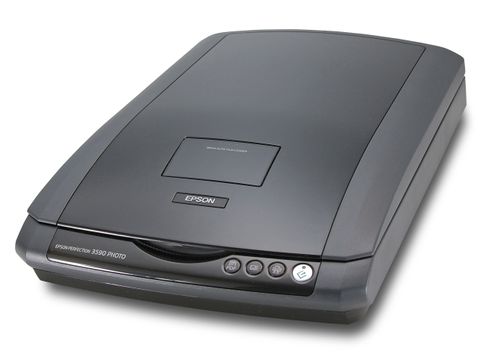TechRadar Verdict
Excellent all-round scan quality combined with speedy operation and a great price.
Pros
- +
Scan quality
Scanning times
Value for money
Clever filmstrip loading
Cons
- -
The HP 4370 is cheaper
Some moiré in halftones
Why you can trust TechRadar
The 3590 Photo isn't Epson's cheapest scanner. Indeed, the near identical 3490 is £20 cheaper. However, the 3590 has an extra feature that marks it out as something special - its automatic filmstrip loading.
Now and again you might want to scan the odd film, and the 3590 has a remarkable solution. Insert the end of the filmstrip into the flip-out door in the scanner's lid, the filmstrip is sucked in and the scanner takes over, automatically generating thumbnails for each frame so that you can tick a checkbox for each one you want to scan.
The 3590 has four buttons on the front for copying, scanning, PDFs and emails. The scanning software interface is clear, with a simple Home mode at one end of the scale and Professional mode at the other.
In Home mode, you indicate the type of document you're scanning, such as Magazine, and the destination - Screen/Web, Printer or Other - leaving the software to choose the settings automatically. In Professional mode, you have full control over the resolution, document size, descreening, unsharp masking and tonal adjustments (though the auto tone option works very well).
The scanning speeds are very impressive. Like the other Epson scanners, it also produced highly saturated colours in the A4 magazine page test. These punchy results are combined with good sharpness and effective descreening. The 150dpi unscreened scan was slightly less impressive, with some interference effects in halftoned photos. The 6x4-inch photo scan demonstrated that the scanner was well within its capacity.
Tech.co.uk was the former name of TechRadar.com. Its staff were at the forefront of the digital publishing revolution, and spearheaded the move to bring consumer technology journalism to its natural home – online. Many of the current TechRadar staff started life a Tech.co.uk staff writer, covering everything from the emerging smartphone market to the evolving market of personal computers. Think of it as the building blocks of the TechRadar you love today.

